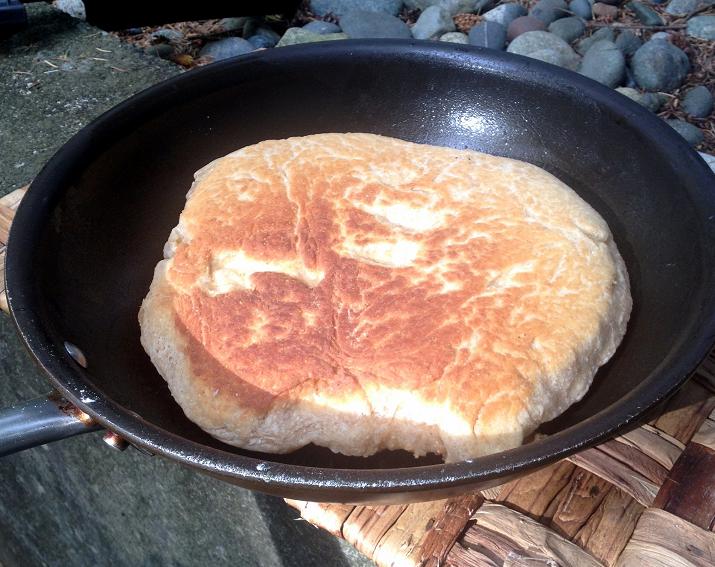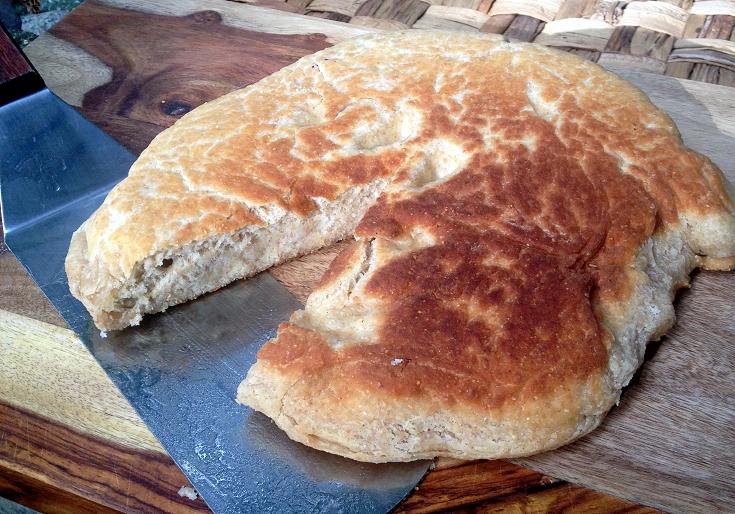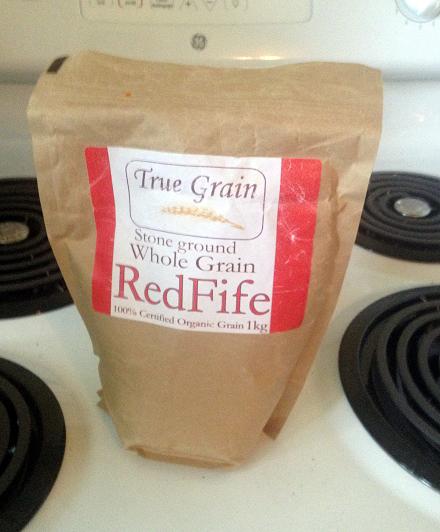 My whole culinary career (such as it is) I’ve been under the mistaken impression that bannock was exclusively a First Nations thing.
My whole culinary career (such as it is) I’ve been under the mistaken impression that bannock was exclusively a First Nations thing.
It must have been all the outdoor cooking demonstrations on Canada Day; bannock broiling up on cast iron beside staves of smoked salmon, always supervised by the local band elders. Every native cook I knew fried a mean skillet full ‘o bannock and on the occasions that Crystal and I went to Uke to see the extended family you could bet there’d be a lot of fry bread involved.
It turns out that although First Nations people may have been grinding nut and berry flour to make something bannock-like, the bannock recipes we recognize today originate in the Middle East. Most historians agree that the recipe came from ancient Egypt and the modern name came from Celtic England.
Oxford:
Old English bannuc, of Celtic origin; related to Welsh ban, Breton bannac’h, banne, and Cornish banna ‘a drop’.
Europeans brought the word with them to the new world a well as wheat to supplement the indigenous corn. Using milling techniques taught to them by the First Nations people they set about replicating old world-style flours used in both leavened and quick breads. No matter the environment, they wanted bits and pieces of home. Pretty soon the term “bannock” came to encompass all the baked or fried quick breads that both the Europeans and natives were making.
 Now that white flour and store-bought bread is widely available the number of people still mixing and frying their own rough-grain wheat cakes is dwindling. First Nations families maintain the tradition, but few Canadians of European decent are game enough to dust off the mixer and skillet.
Now that white flour and store-bought bread is widely available the number of people still mixing and frying their own rough-grain wheat cakes is dwindling. First Nations families maintain the tradition, but few Canadians of European decent are game enough to dust off the mixer and skillet.
But bannock is extremely easy to make; if you can mix corn bread and fry a pancake you have all the necessary skills. And for anyone out there who hasn’t had the pleasure of scooping crunchy-spongy mounds of savoury wheat cake into their mouths straight from the griddle (also, interestingly from the Celtic for slab, or the early Scottish stane [stone] the root word for scone… Gods, I’m a nerd) it can even be life-changing!
Lately I’ve been banging out a lot of bannock. Some denser and more in the European tradition, and others puffier and lardier (best adjective ever!) the way First Nations cooks do it. Both kill it on a breakfast table alongside some poached eggs ‘n jam or can be cooked over a campfire and eaten straight out of the skillet.
This version provided an opportunity for me to play around with some more rustic and nutritious types of grains like the heritage Red Fife wheat from Cowichan Bay’s True Grain Mill. It roughs up the texture and deepens the flavour of the bannock the way I’d imagine all that gnarly stone ground grit did back in the day.
 Next time, I’ll post a version ‘o bannock with roots (and an equally tangled soap opera of race relations) even deeper into the Northwestern American story.
Next time, I’ll post a version ‘o bannock with roots (and an equally tangled soap opera of race relations) even deeper into the Northwestern American story.
Bannock – European-Style (Serves 6-8)
Ingredients
- 2 cups (250g) Unbleached All Purpose Flour
- 1 cup (125g) Red Fife Whole Wheat Flour
- 1 Tbls. (10g) Baking Powder
- ½ Tsp. (3g) Salt
- 2 tsp (8ml) Liquid Honey
- 1 cup (250ml) Milk
- 3 Tsp. (15ml) Oil or Lard
Method
- Mix together the dry ingredients and slowly pour in the honey and milk while gathering the dry stuff around it into a ball. I use a mixer with a hook attachment for most of my bread making, but a bowl and a pair of hands works just as well.
- Knead the dough for about four minutes or until the outside of your dough ball is smooth, but the inside is still soft and tacky. If the mixture seems too wet, add more AP Flour, if it’s too dry, more milk. A great way to check is to open up your mixer and pull the dough hook up: If the dough is shellacked on and comes with it, you’re too soft for conventional bread, but just right for bannock. Don’t work it anymore!
- Flour your hands and work surface. Turn your dough ball out and use your hands (not a rolling pin) to shape it into a rough 8” round pizza crust shape about ¼ inch thick. Also, pinch off a piece and toss it to the dog… They love stuff like that.
- Fire up the oil or lard in a large non-stick or cast iron frying pan over medium-high heat. You’ll want the oil exactly at frying temp when you add your bannock or it’ll become soggy, so pinch off another little piece and toss it in every couple of minutes until you get the right amount of pop ‘n sizzle. Fry the whole bannock until puffy and golden brown on both sides (approx 3 minutes each). Carefully remove the bannock from the pan to rest on a wire rack for a minute or two before cutting into it.
Bannock will get spongier the longer it’s left uneaten, but it’s still delicious even after two days in the fridge!
 Music To Fry Bread To:
Music To Fry Bread To:
Tycho – Awake